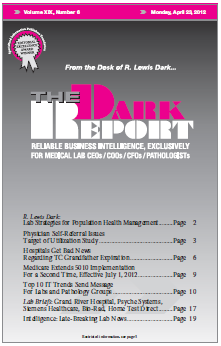CEO SUMMARY: Healthcare’s shift away from fee-for-service medicine and toward integrated clinical care is widely recognized. However, few lab administrators and pathologists are aware of the even faster transformation underway in healthcare informatics. Presented here are the “Top 10 Tech Trends” identified last month by Healthcare Informatics. A common theme is the need for information …
Top 10 IT Trends Send Message For Labs & Pathology Groups Read More »
To access this post, you must purchase The Dark Report.


